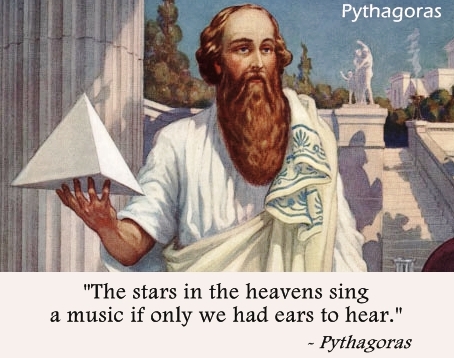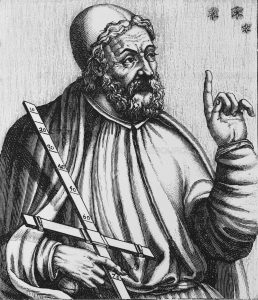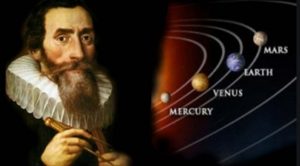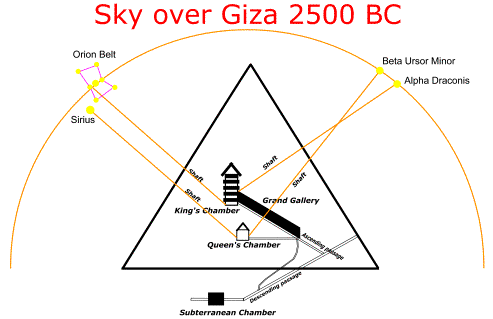The History of Astrology
This article titled ‘The History of Astrology’ formed part of Module 1 in the Learning Astrology Series and was written by members of the Lifewave Light and Sound Meditation Group in the 1980’s. I have only added images to the original document which can be viewed below.
1.ASTROLOGY is an individual interpretation of what is happening in the SOLAR SYSTEM, hence it is practically impossible to put a date on its origin because Man has always looked out at the night sky, watched the movements of the planets against the background of the fixed stars and had some notion of how it all affected him.
According to legends, when the ancient civilisation of Atlantis was destroyed, some people escaped, taking with them occult knowledge, including Astrology, to Egypt in the East and South America in the West.
Many early civilisations built temples that were really gigantic CELESTIAL OBSERVATORIES as well:
a) The 7 – stage pyramid built by the Mayans in Yucatan.
b) The Pyramids in Egypt:
c) Stonehenge.
d) The Ziggurats in Babylonia.
2. Looking back at these early civilisations which have left records on Astrology and Astronomy, we find that Astrology was used for the benefit of the society rather than for making individual character assessments and predictions. In those days, people would have seen themselves as integral parts of their society, each having his or her own particular function. There was total allegiance to the King, who was often considered to be the SUN GOD and worshipped as such. The King was also considered to be the STATE: anything affecting the King would also be reflected in the lives of ordinary people. This belief, that whatever happens in the greater is reflected in the smaller (macrocosm and microcosm) is the basic premise which underlies Astrology. It is called the LAW OF CORRESPONDENCE.
In those days, there would have been a special group of people, usually priests, who had knowledge of Astrology which was used for timing special rituals and festivals to ensure peace and harmony in the kingdom and good harvests. Hence, the priests became extremely powerful people on whom the entire civilisation depended for prosperity.
3. The SUN was used for measuring the time during the day, seasons during the year and ages throughout the lifetime.
The MOON was necessary for cycles of planting and mating, predicting the rise and fall of rivers and planning festivals.
PLANETARY PATTERNS could indicate the most propitious (favourable) times for planting and harvesting and also the most suitable crops for the year depending on weather conditions..
Particular characteristics were attributed to the SUN, MOON AND PLANETS – these were derived from planetary colours, patterns while moving across the sky, lengths of planetary cycles and their mutual relationships. A whole mythology was built up around these and the ordinary people worshipped them as Gods and Goddesses. Myths were used as a means of transmitting essential astronomical information from generation to generation (ie: – the death and resurrection of Osiris).
4. THE GREEKS
 PYTHAGORAS OF SAMOS (6th Century BC) linked numbers with music in his concept of the HARMONY OF THE SPHERES, in which the planets revolve around the earth in concentric circles.
PYTHAGORAS OF SAMOS (6th Century BC) linked numbers with music in his concept of the HARMONY OF THE SPHERES, in which the planets revolve around the earth in concentric circles.
PLATO AND ARISTOTLE perpetuated this geocentric model of the universe. Whereas Pythagoras had 7 planets in his system, Aristotle added two more spheres – the sphere of the fixed stars and the sphere of the Prime Mover or God. This system was in use for hundreds of years. Aristotle constructed a mechanical model of 54 spheres to account for the movement of the planets.
PROBLEM – he was trying to account for the planetary motions he observed and apply them to a GEOCENTRIC model of the universe, whereas the SUN is the centre in terms of observation. In Astrology, we also use a GEOCENTRIC system because Man is the centre (remember the Law of Correspondence).
 5. CLAUDIUS PTOLEMY (left image) created another monstrous model of 40 gigantic wheels to explain how the planets moved through the heavens. Another misconception of these early thinkers which confused them is their belief in perfect concentric circles. They did not realise that planetary motion is elliptical, hence their difficulty in constructing a working model of the universe. However, Ptolemy is famous for having written a mammoth textbook record of all existing astrological knowledge in the 2nd Century AD. His book, called TETRABIBLOS is still in print today. It was attacked, when first published, by the growing ranks of Christians who considered all divination to be the work of demons. Ironically, the Bible as we know it, is full of Astrological references which the Christians do not recognise!
5. CLAUDIUS PTOLEMY (left image) created another monstrous model of 40 gigantic wheels to explain how the planets moved through the heavens. Another misconception of these early thinkers which confused them is their belief in perfect concentric circles. They did not realise that planetary motion is elliptical, hence their difficulty in constructing a working model of the universe. However, Ptolemy is famous for having written a mammoth textbook record of all existing astrological knowledge in the 2nd Century AD. His book, called TETRABIBLOS is still in print today. It was attacked, when first published, by the growing ranks of Christians who considered all divination to be the work of demons. Ironically, the Bible as we know it, is full of Astrological references which the Christians do not recognise!
6. One of the earliest known Astrological traditions is that of Babylonia, upon which our present system is based, Clay records, dated at 3,800 BC during the reign of King Sargon, show a firm and established tradition of Astrology. The first recorded horoscope, that of Shuma-usher’s son, is dated 30 April 409BC. It was a Babylonian priest, BEROSUS, who took Astrology to Greece where he founded a school in the 3rd Century BC, making it available to ordinary people,
7. In the Far East, Astrology was flourishing in China and India. In China, it developed along slightly different lines, being linked with YIN and YANG and the FIVE ELEMENTS: Fire, Earth, Metal, Water and Wood.
8. The ROMANS were deeply superstitious and the Emperors and common people alike adored Astrology, even though the Government persecuted and killed Astrologers from time to time. All the Roman Emperors from Tiberius (1st Century BC) kept Court Astrologers, Augustus even published his own horoscope and minted coins bearing his favourite astrological signs.
9. By the Middle Ages, Astrology was embraced by everyone; the subject was taught at universities and the Chancellor proclaimed that no activity, from sowing of crops to choosing a wife, should be accomplished without Astrological guidance. Well-to-do families had their children’s horoscopes cast. The humbler people would go along to the local Apothecary who could diagnose sickness and the correct herbal remedy with Astrology.
 10. The life of JOHANNES KEPLER – Astronomer/Astrologer (left image), illustrates the general atmosphere of ignorance and superstition that abounded in late 16th Century/early 17th Century Europe. Some of his relatives were burnt at the stake as witches, and his mother was accused in old age of consorting with the devil, narrowly escaping burning. He disagreed with popular prophecies, calling them ‘dreadful superstition’, yet he believed in the possibility of a new and true Astrology as an exact, empirical science. He practised Astrology, even started his career publishing Astrological calendars and ending it as Court Astrologer to the Duke of Wallenstein.
10. The life of JOHANNES KEPLER – Astronomer/Astrologer (left image), illustrates the general atmosphere of ignorance and superstition that abounded in late 16th Century/early 17th Century Europe. Some of his relatives were burnt at the stake as witches, and his mother was accused in old age of consorting with the devil, narrowly escaping burning. He disagreed with popular prophecies, calling them ‘dreadful superstition’, yet he believed in the possibility of a new and true Astrology as an exact, empirical science. He practised Astrology, even started his career publishing Astrological calendars and ending it as Court Astrologer to the Duke of Wallenstein.
In one of his treatises, he warns certain Theologians, Physicians and Philosophers ….”that, while justly rejecting the stargazer’s superstitions, they should not throw out the baby with the bathwater…”
He also discovered that the planets move in elliptical, not circular orbits, and believed in the Heliocentric Universe, rather than the Geocentric Model.
11. Astrology was practically ignored in the 18th Century. In the ‘Age of Reason’ nobody felt insecure or doubted that the future would be glorious. In the early 19th Century, the 1825 Vagrancy Act outlawed Astrologers from England, calling them ‘rogues and vagabonds’.
12. A revival in Astrology’s fortunes took place in the mid-19th Century, when Zadkiel and Raphael published manuals and almanacs. The founding of the Theosophical Movement, in 1875, introduced certain Hindhu beliefs, including Astrology into the Western World. One Theosophist, ALAN LEO, pioneered modern Astrology in Britain. In 30 books, he restated the ancient principles of the subject, placing the emphasis on human character, not fortune telling.
13. In World War II, both sides used the services of Astrologers. Propaganda material, predicting disaster, was dropped over enemy territory, in the hope of demoralising the population.
14. That brings us to today, when the subject is taken more seriously once again:
At the moment, several major Schools of Astrology exist, reporting enormous growth in membership. Astrology is even being taught in FE Centres.
ORIGINAL DOCUMENT


